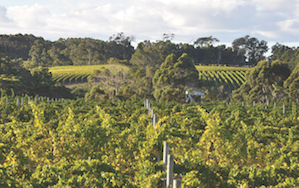Dan Parrot is Laithwaite’s buyer for Australia. Laithwaite’s is part of Direct Wines, which is based in the UK and has operations in the US, Hong Kong, Australia and mainland Europe. He says: “There’s no doubting the high Australian dollar has made life tough for Australian wine, especially in the UK where customers are spoilt for choice of wines from around the world.
“Having said that, our business identified the need to locate the Australian wine buyer on the ground in Australia. By having our buyer living in Australia we’re able to sniff out great value parcels of wine and jump on them quickly, often before other businesses are even aware of them. This capability helps us to counteract some of the current exchange rate challenges.”
Tony Allen, category purchasing manager, wine, for Matthew Clark – the leading supplier of wine to the UK on-trade sector – is also concerned about the effects of the strength of the Australian dollar. He says: “The major challenges to the Australian wine sector must revolve around global market demands and their ability to profitably meet these demands while the Australian dollar is so strong.
“The historic success of Australian wine brands at entry-level created a blueprint for other countries to emulate, but without Australia’s high labour costs or limited water supply, among other constraints. The strong dollar has therefore left the door open for competitor countries to establish firm footholds in certain markets,” he says.
“If Australia can fight to maintain its market share while the dollar is strong, perhaps opportunities will come naturally when the dollar weakens. Opportunity and profitability will then depend on whether or not it decides to ‘buy’ its way back into the market. Much smaller and possibly longer-term opportunities could be via premium wines or exciting grape varieties,” says Allen.
Fiona Findlay, sales and marketing manager for Voyager Estate in Margaret River, Western Australia, says: “The opportunity remains one of telling the regionality story more effectively and exposing more consumers to the premium products available. We need to connect.
“China is an important market, but it is like any other market – if you want to build a brand through on-premise and fine wine retail distribution it takes time, resources and a lot of effort, particularly as there is an enormous education process required as drinking wine is not a ‘normal’ part of the Chinese culture, says Findlay.
Fresh and relevant
In summary, Dyer says: “Keep Brand Australia fresh and relevant. I love the work Wine Australia is doing with Tourism Australia, bringing together food and wine. The work we do at McGuigan with (TV chef) John Torode demonstrates to me how compelling this message is.
“We must establish greater credibility in the on trade. We have the quality and the wines to do this. We must not take our eye off the quality ball, particularly at entry point. We are not manufacturing a beverage to a price point – we are making wine experiences for a willing audience. We’re never going to compete with Spanish table wine.
“We must continue to innovate, but do so off a base of quality, authenticity, provenance and history. The Australian wine industry was launched by some great wine people, real characters, and we must retain that contact and that story. We are not corporate,” Dyer concludes.




